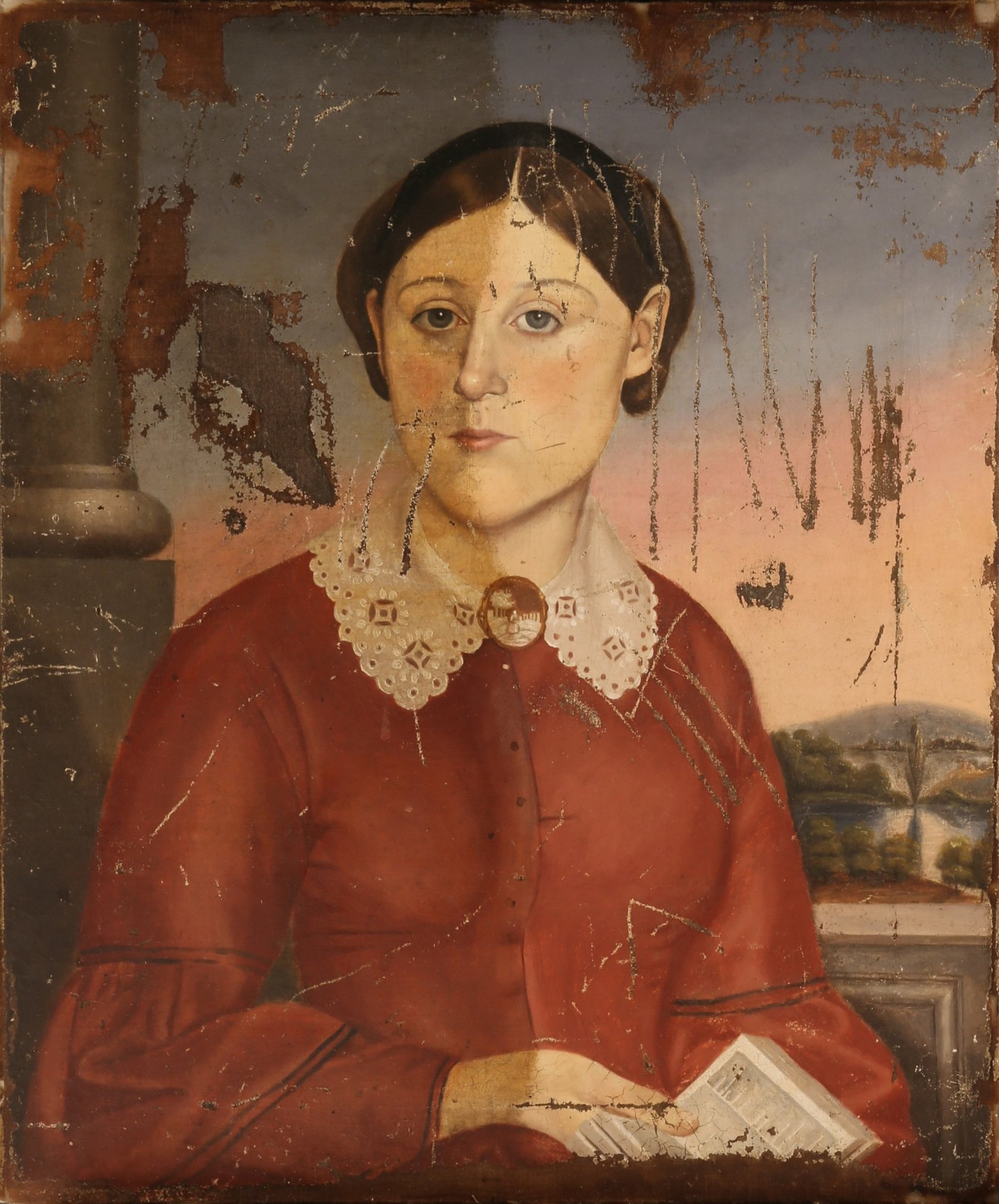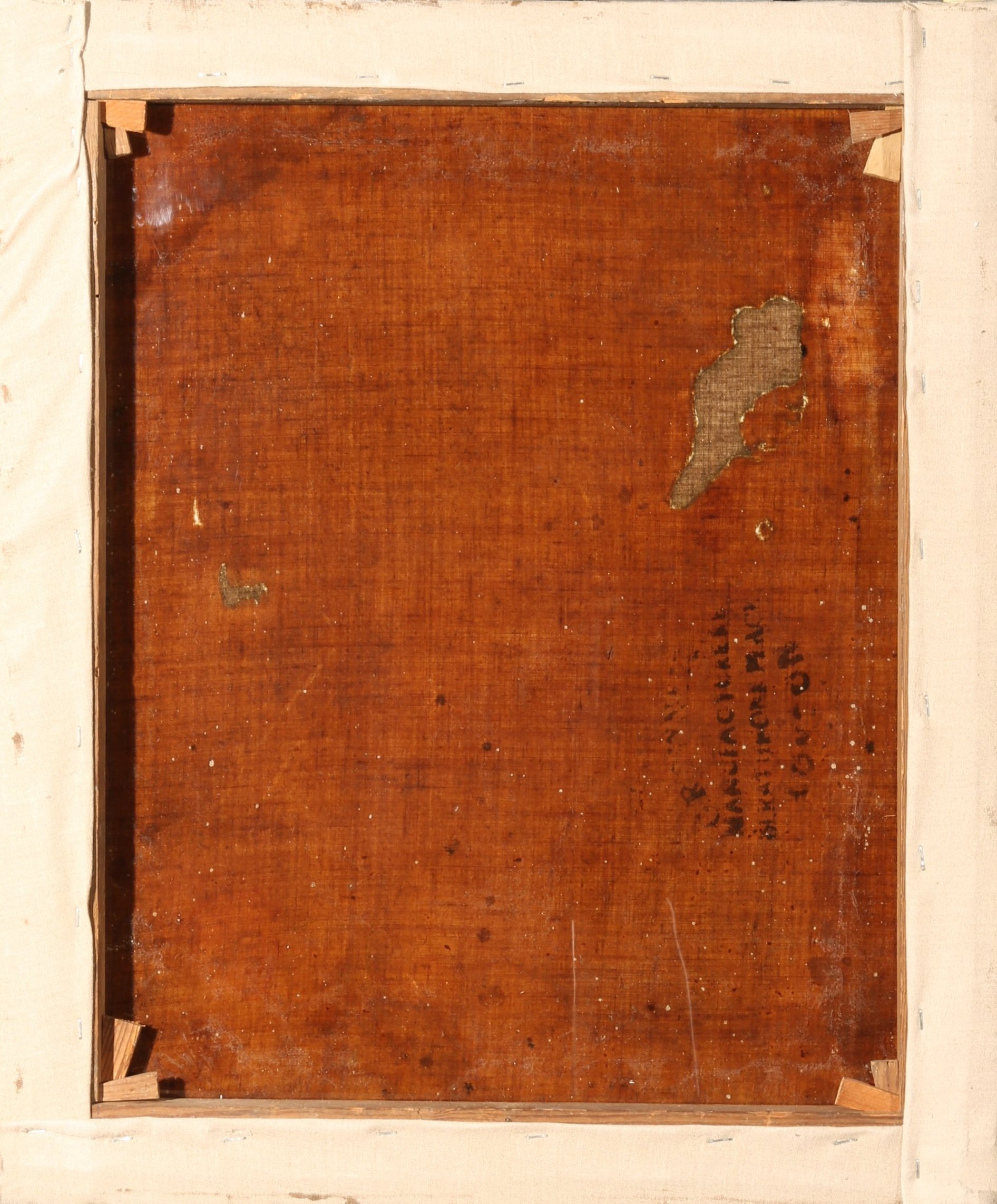Harriet Thomas by John M.
History
Image - Before Treatment
Close examination of the painting showed an ink inscription on the back of the painting’s stretcher which read, “Harriet Thomas, Jacksonville, July the 27th, 1857.” The client noted that her family had old land deeds from Clemson, South Carolina from this time period and earlier. We are assuming this portrait is of a family member from South Carolina.
The back of the canvas has a circular black ink stamp from a canvas/art supply maker or distributor. It reads, “B Rowney & Co. Manufacturers, 51 Rathbone Place, London.” Archival material from the National Gallery of England informed us Rowney’s business was in London from 1832 – 1844. After 1844, the business address and stamp shape changed. The canvas was originally purchased from Rowney in England. It was likely shipped to the United States and purchased by the artist from a local art supply business and used to make this painting in 1857.
Painted Artifacts
Assessment
Image - Raking light photography
This portrait was made using oil paints, over a white preparatory ground layer, which was stretched onto a four-member home-made pine stretcher. The linen canvas was secured on its stretcher with iron tacks that are now rusted. The canvas is out of plain and partially torn from its stretcher, showing several areas of staining, losses, tears, and scratches. The paint was not well bonded to the canvas and needs to be consolidated, lined and re-stretched prior to dirt, varnish, and grime removal.
Treatment
Image - Half cleaned & secondary support canvas added
We carefully removed the painting from its stretcher and relaxed the tacking edges with the aid of moisture and weights before working on relaxing the wrinkles in the canvas itself. After the wrinkles had been relaxed, the back side of the painting was cleaned of any dirt, dust, and debris trapped behind the stretcher. Linen canvas inserts were glued in places of canvas loss using a conservation grade adhesive, then the painting was prepared for the addition of a secondary support canvas. Once lining was complete, it was re-stretched back onto its original stretcher and keyed out.
(continued)
Image - Restretched & filled
After re-stretching the painting back onto its stretcher, we can begin cleaning. Using the appropriate solvents, we cleaned off the discolored varnish to reveal the pastel sky and the red of the subject’s dress. Now the painting has gone from faded and discolored to bright and vibrant. Next is filling any losses and scratches to level the painting to an even, smooth surface to prepare it for inpainting.
Canvas stamp on back of painting reads “G Rowney & Co, Manufacturers, 51 Rathbone Place, London.”
Before
After









